Types of scale insects and methods of dealing with it

The scale insect is an insect that can greatly harm a huge number of plants in the garden. If you are growing berries, flowers or fruit trees, it is important to understand what it looks like. The scale insect is of different types, each of which prefers certain crops. More detailed information will help you learn not only about the pest, but also about ways to combat it, as well as about preventive measures.
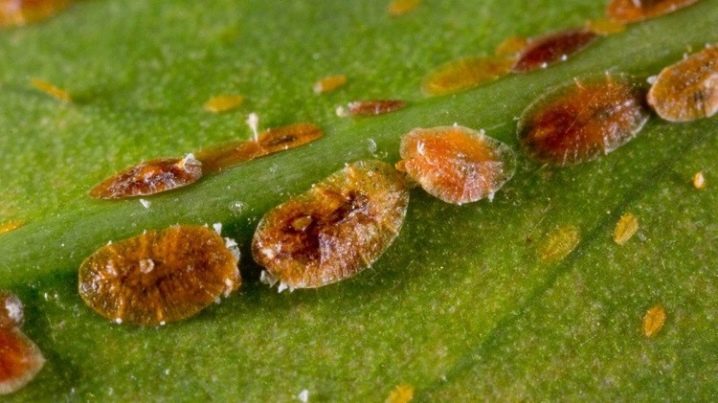
Description of the pest
The scale insect is a small insect, but even at such a small size, it can harm an entire tree. The body is covered with a shell, which acts as a protection, so not everyone can recognize a living being in hard growths. Experienced experts call the pest a garden turtle, and this fully describes the appearance. A few weeks are enough for creation to destroy the plant - this applies to both outdoor and indoor specimens. The length of the insect reaches 5 mm, it sits motionlessly on the plant, so it is easy to confuse it with drops of resin.
Males are 2 mm smaller than females, they most often move with the help of wings and legs. The main danger is represented by the females, which stick to the leaves and branches, it is not so easy to deal with them, because the shell does its job perfectly. The eggs hatch into larvae, which leave behind a sticky liquid, which, in turn, is an excellent place for infection to develop.
It should be noted that the larvae infect garden plants, including cucumbers, tomatoes, and many others.
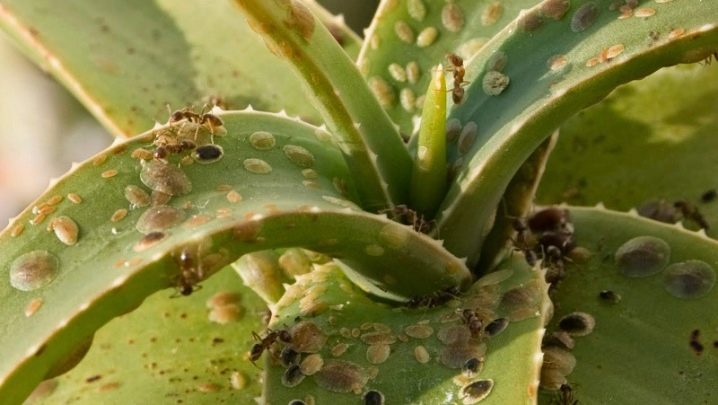
Pest varieties
There is a wide variety of scale insects, and each species feeds on specific types of plants. Therefore, first you need to find out how they might look in order to understand what you are dealing with. The most popular types are offered to your attention.
California
This pest settles on apples, pears, plums, cherries with cherries, walnuts, quince, roses and other types of flowers. It can also be found on grapes, maples and oak; the list contains almost three hundred plants. Berry crops also attract insects, larvae suck out sap, trees begin to deplete, bark cracks and dies, and branches gradually become dry.
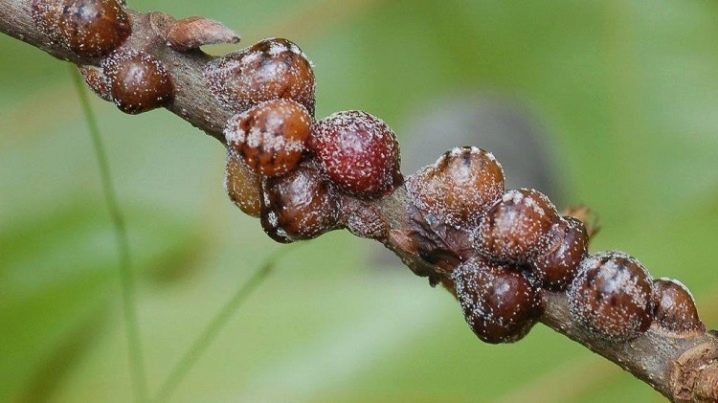
False shield
The main difference from ordinary scale insects is that they do not have a shell; the skin of the female, which dies, performs a protective function for the larvae and eggs. The pest is attracted by the juice of the needles, spruce shoots, the Decembrist.
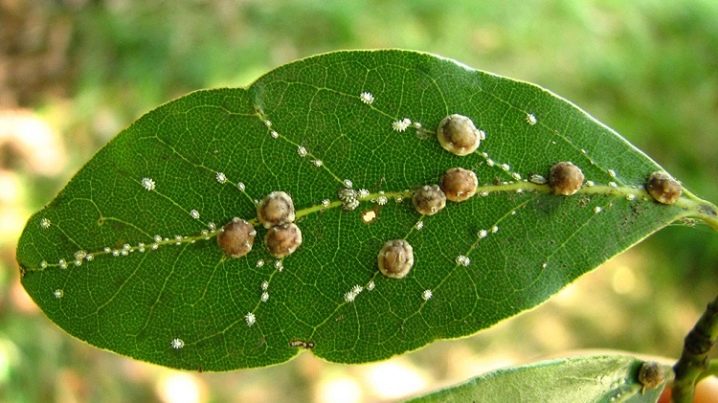
Mulberry
This scale is also called white. The pest settles on trunks and thick branches, it can be seen on bushes. This polyphage is deservedly considered the most dangerous, it devours fruit crops with seeds and seeds, forest and ornamental plants, and can destroy a tea tree plantation. Mulberries, almonds, walnuts, currants, raspberries and other types of berries usually do not survive with this parasite. In Turkey, the scale insect eats peaches and cherries, two generations are born in a year. Plants weaken, which negatively affects the yield, and then the market value.
This type of parasite is considered the most common.
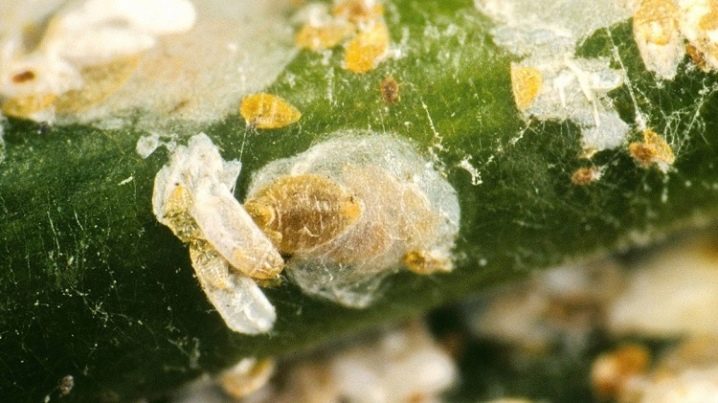
Red orange
For citrus fruits, this pest is the most dangerous, soon the fruits and leaves fall off, and the plant dries up altogether. The nymphs have a yellowish tint, they live in depressions, so they are not so easy to find on lemon. The parasite feeds on plant tissue and sap, its saliva contains toxins.

Comma
She is apple, or apple, loves different fruit crops, settles even on honeysuckle. However, you rarely find it on pears, peaches, cherry plums and mulberries. First, the branches begin to dry out, and then the whole plant.
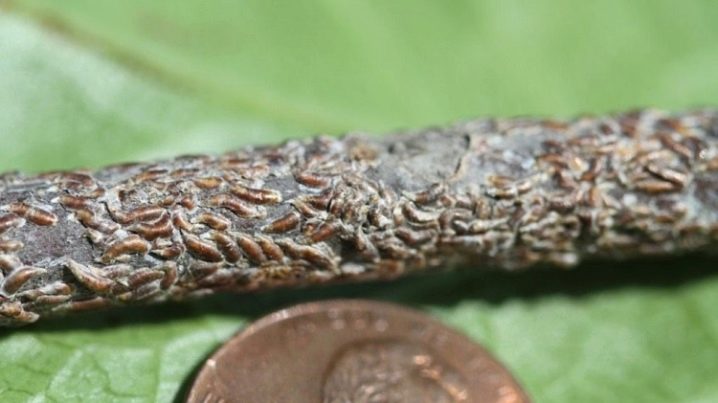
Willow
This type of scale insect is most often found in the western part of Europe. Despite its name, the insect is attracted by aspen, poplar, alder, that is, various deciduous species.
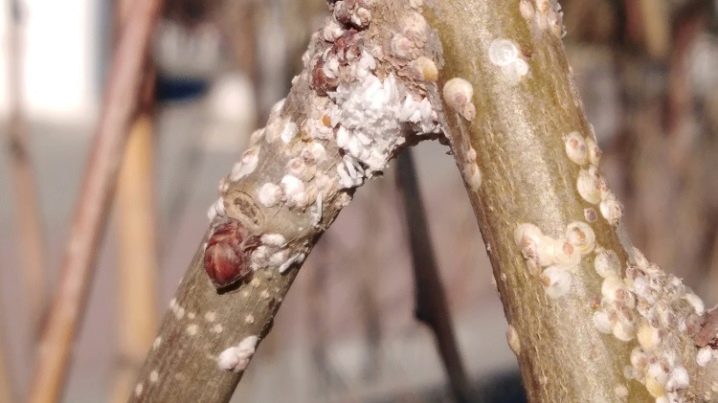
Eonymus
The name speaks for itself, the parasite devours absolutely all parts of the plant. The female scale insects are dark brown, the shape of the scutellum resembles a pear, the diameter is only 2 mm, so you need to look for them carefully. As for the males, they are white, so they are much easier to spot.
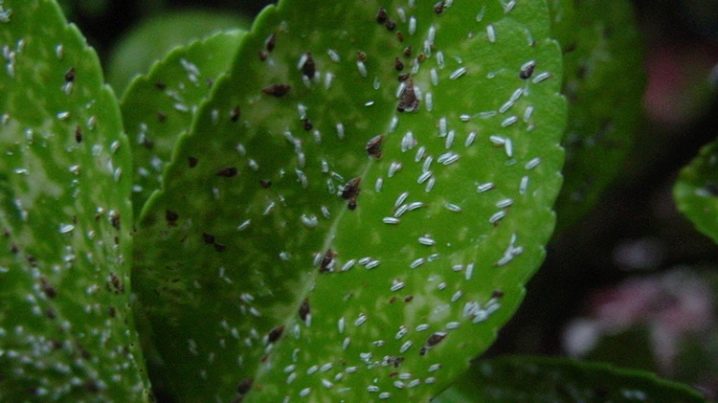
Pine
It is difficult to fight with this type of insect, the scale insect is resistant to different methods of struggle. Females hide under the needles, develop there, during this time the needles begin to fall off, and the tree dries up altogether.
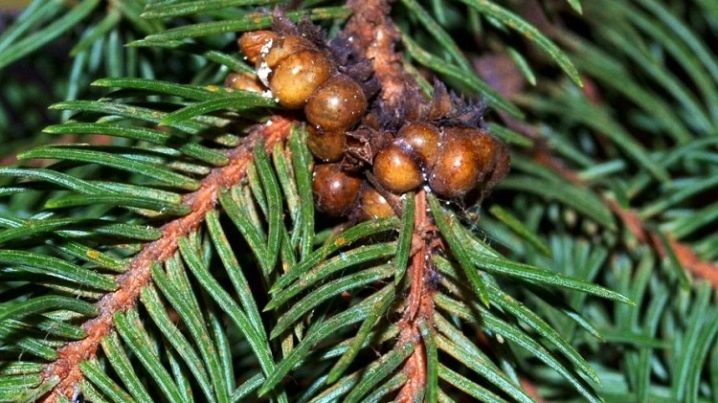
Other
Palm belongs to the order of equal-winged false scutes, it can be found on dracaena, and this type of parasite is also attracted by Benjamin's ficus and other indoor plants. For greenhouses, the pest is extremely dangerous if it is not detected and destroyed in time. The orchid family, cacti and tropical plants are often attacked by these insects. The shell of the females is white, almost transparent, and flat.
The juniper scale is brown in color, the shape of the calf is pear-shaped, two stripes stretch from the head. Oleander and other indoor flowers are attractive to these insects, and if not cared for properly, the parasite will multiply and the plant will soon die.
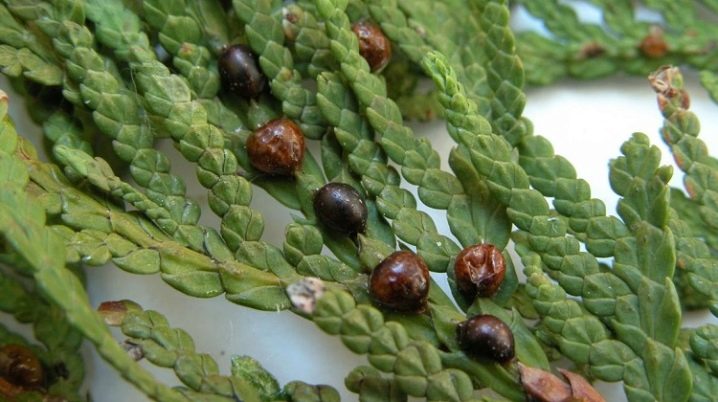
Control methods
You can get rid of any kind of parasite if you know the methods and follow the instructions. We bring to your attention several options for insect control that will help keep the crop from dying, be it fruit trees, berries or even flower plants.
Chemicals
Experts note that adults are not so easy to destroy, it is most difficult to fight them, since there are no appropriate drugs. Some products dissolve the insect, so this option is not suitable for processing plants that are intended for food. Most chemicals should not be used on fruit crops, as they contain poison.
Insecticides are designed to treat plants and the areas where they are found. This includes "Actellic", which is in demand for the fight against aphids, scabbard and false shield. It contains a strong substance that remains active for up to 10 days. The only drawback is the pungent smell that remains in the apartment for several days. "Aktara" is designed to protect flowerpots and garden plants, the active ingredient is thiamethoxam. This product is not afraid of sunlight and will not lose its effectiveness in dry air or rain, which is a great advantage.
However, it should be remembered that each chemical preparation belongs to a certain hazard class not only for humans, but also for bees. After spraying the crops with Aktara, it is necessary to wait about three weeks before harvesting. Phosbecid has a systemic effect, which protects garden and horticultural crops, and also easily copes with the destruction of insects. It is a highly toxic product that should not be used during flowering. "Bankol" is suitable for fighting scale insects, it can be used in hot places, moreover, it does not have a sharp aroma. It should be noted that this drug is considered one of the best, as it is suitable for the destruction of the most persistent parasites. Low toxicity is one of the advantages.
Pyrethroids include "Inta-Vir", which effectively fights scabbard and other pests.The drug must be diluted with water and treated with it, the effect may last for several weeks, depending on the type of soil. Each tool has its own characteristics. Having decided on the choice, read the instructions and follow the manufacturer's recommendations, observing the dosage exactly.
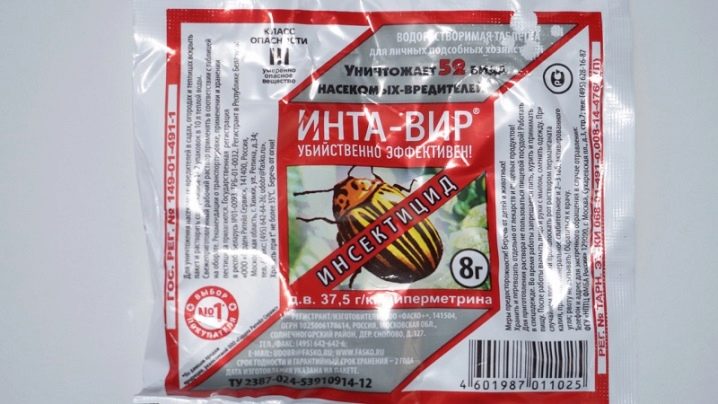
Traditional methods
The main advantage of traditional methods is that they are less dangerous to plants or humans. From onions, you can prepare gruel, which is used to process the part of the plant affected by the shield. You can remove parasites with a soft brush. At the final stage, the plant must be washed with soapy water. To prepare the tincture, the onion is crushed and infused for several hours. An infusion of fresh pepper is added there, then the agent must be left for a day, and then strain and start processing. About 20 ml of liquid soap and a teaspoon of alcohol are added per liter of water.
This option is suitable for controlling the eggs and larvae of the parasite. Experts recommend making a trial version by processing a small part of the plant and waiting for half an hour. If the plant hasn't responded, you can continue. Burdock oil and washing powder will help not only destroy pests, but also take preventive measures. A spoonful of oil and the same amount of washing powder are diluted in a liter of water, you need to insist for several hours. For work, a spray bottle is used to spray the plant.
It should be noted that such folk methods do not help with the invasion of parasites, they are effective only at an early stage.
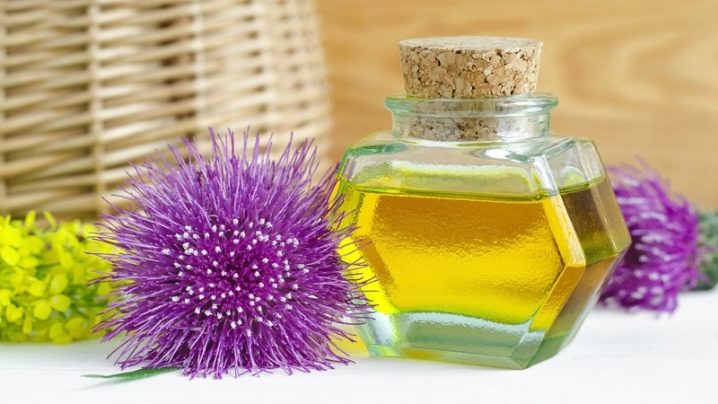
Prevention measures
Proper care of any plant is the best prevention of attacks from any pests, not just scabbards. If trees or shrubs have sensitive foliage, special inspection is required. If you are dealing with indoor plants, then each purchased item must be held separately and examined for insects. The room needs ventilation, avoid high humidity and dust, spray the leaves to remove dust.
When it comes to open space, for example, in a garden, infestation often begins with wild plants, which means that it is important to destroy weeds, weed the soil, and remove all unnecessary things.
Any crops must be regularly monitored, inspected, whether larvae have appeared on them. By following these simple rules, you can keep your plants safe and save yourself from having to fight parasites.
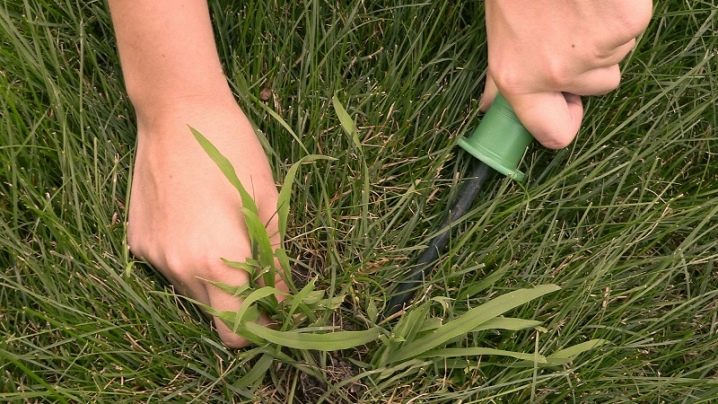













The comment was sent successfully.